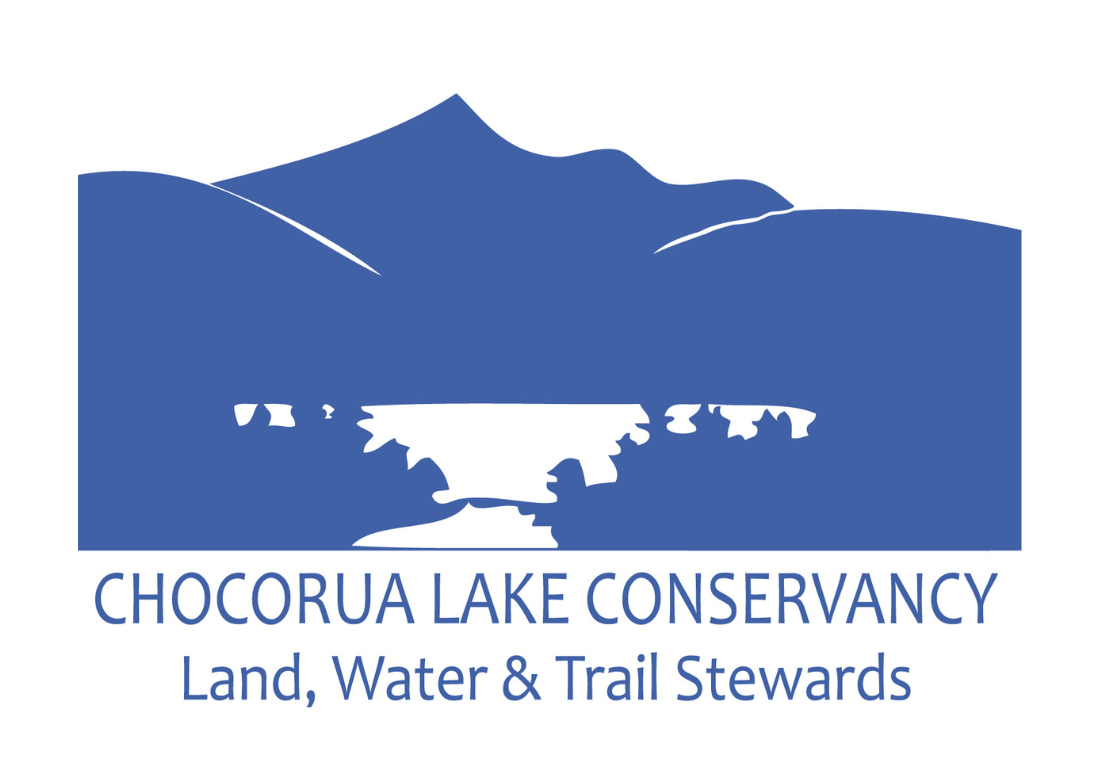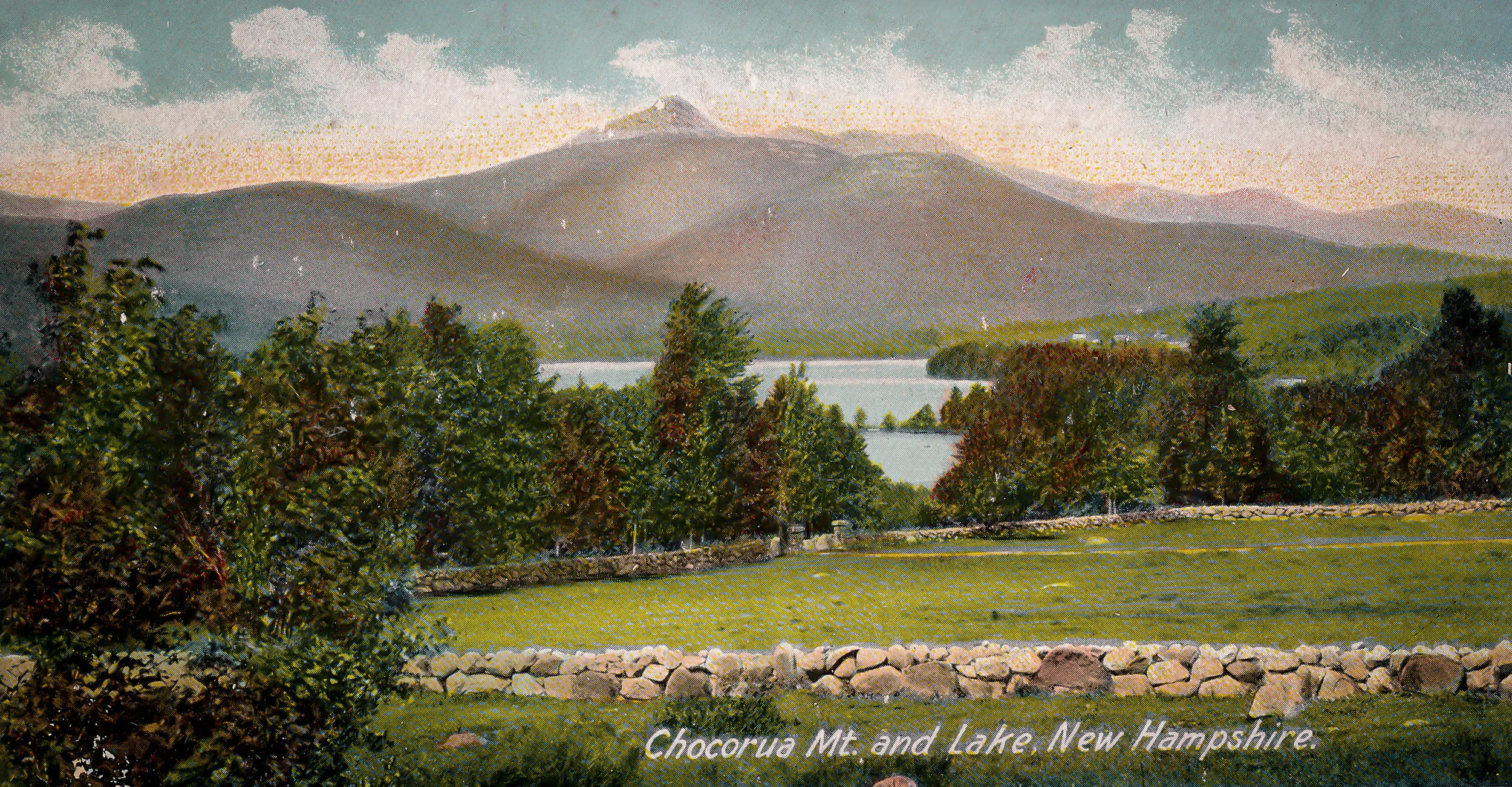Some of the history of Chocorua Lake Conservancy…
Today, a person traveling north on Route 16 comes to the top of the hill just north of Chocorua Village and sees a jaw-dropping view: two lakes separated by a picturesque bridge with beautiful wooden railings, forests on all sides with no houses visible, lorded over by the craggy peak of Mount Chocorua.
Thanks to Chocorua Lake Conservancy, the Chocorua Lake Basin has managed to resist the development pressures so many New Hampshire lakes have faced: there are no billboards, no commercial buildings, no motor boats or jet skis, no houses visible around the lake. Instead, visitors find attractive public areas for nearby residents and visitors along the southern and eastern shores for swimming, kayaking, photography, cross country skiing, skating, ice fishing and sled dog races.
Photo: Alex Moot
CLC was formed in 2014 through the merger of sister nonprofit organizations, the Chocorua Lake Association (CLA) and Chocorua Lake Conservation Foundation (CLCF). The CLA and CLCF were founded simultaneously in 1968 to fulfill the vision of early visitors to Chocorua in the latter part of the 19th century: that human activities should not encroach upon the natural beauty and splendor of the Chocorua Lake Basin. For a hundred years, local residents followed that tradition. (One theory has it that we owe the conservation of so much land around the lake and basin to a fateful day in 1876. You can read that story here.)
In the 1950s, it became clear that the lake basin faced new and serious pressures from private and commercial development. As early as 1953, local property owners began discussing the establishment of an organization to formalize many of the long-standing but unstated practices into binding safeguards for the Chocorua Lake Basin, but it was not until the mid-1960s that the effort achieved momentum. In 1967, property owners hired a professional land-planning firm to study the situation.
Chocorua Lake, with its wooded shores, and the lake basin from above, with Silver and Ossipee Lakes in the distance. Photo: Juno Lamb
Based on the firm’s recommendations, in 1968 the local residents simultaneously created the CLA and the CLCF. The CLA was created as a nonprofit membership organization charged with working with state and local government. The CLCF was created as a nonprofit trust that could own and manage property for conservation purposes. In the first five years, practically all of the land immediately surrounding Chocorua Lake was placed under conservation covenant. The conservation covenants allow only residential use, require a minimum eight-acre lot size and control building height and setbacks. They also prohibit billboards, commercial extraction of sand and gravel, alterations to natural drainage, and clear cutting within 150 feet of Chocorua Lake.
Since their creation, the CLA, CLCF and CLC have relied on a corps of board members, committee members and other volunteers to accomplish their work. These volunteers not only helped landowners conserve their land through gifts, or purchases of land parcels or conservation easements, but also attend to necessary stewardship responsibilities and the maintenance of areas for public use. Board members, committee members, and other volunteers perform many of the tasks required to keep a small land trust successfully functioning.
Over the past 50 years, the CLA, CLCF and now CLC have received financial support from over 700 households across 33 different states.
In May 2016, CLC hired its first full-time Stewardship Director, responsible for advancing CLC's stewardship program, which entails the managing or stewarding almost 3500 acres of protected land in the Chocorua Lake Basin.
In 2018, CLC successfully completed the Timeless Chocorua capital campaign which provided funds to protect the Basin View Lot from development and to ensure that visitors will forever be able to safely stop and enjoy the iconic view at this property. The campaign also established two funds, a Chocorua Lake & Lands Access Fund to provide additional funding for CLC’s ongoing maintenance of its public access areas at Chocorua Lake, and a Stewardship Fund to provide funding for a full-time Stewardship Director.
Some of Our Accomplishments:
Limited residential development and prevented all commercial development in the Chocorua Lake Basin. As a result, no houses are visible to picnickers, paddlers, swimmers and visitors to the Narrows Bridge.
Partnered with the UNH Center for Freshwater Biology since 1981 to monitor the water quality of Chocorua Lake, which remains pristine and excellent for both swimming and boating. The lake has an optimal acidity (pH) for fish growth and reproduction.
Thanks to CLC’s public lake access areas, about forty percent of the Chocorua Lake shoreline is available for use by the public, more than any other lake in New Hampshire excluding state parks.
Persuaded the NH State Legislature to pass a law in the early 1970s banning all motorboats from Chocorua Lake. CLC successfully defended this ban in 1998.
Brought together six federal, state and local agencies to complete what is termed the Berms and Swales Project. This project included the installation of a system of berms, swales and settling and filtering basins to catch water and sediment on the eastern shore before they enter Chocorua Lake. In the year following the completion of the project, water quality monitoring showed an impressive 82% reduction in phosphorus entering Chocorua Lake. In 2001, CLC was awarded the Conservation Award of the Year by the Carroll County Conservation District. In 2002, this project was given the Technical Excellence Award from the North American Lake Management Society. In 2003, the Berms and Swales Project became a model demonstration project and “best management practice” for road agents from New Hampshire, Maine, and Massachusetts.
Repair and periodically replace the historic cedar railings on the Narrows Bridge.
In 2005, successfully registered the Chocorua Lake Basin Historic District, which includes 155 historic buildings across 6,000 acres, onto the National Register of Historic Places.




